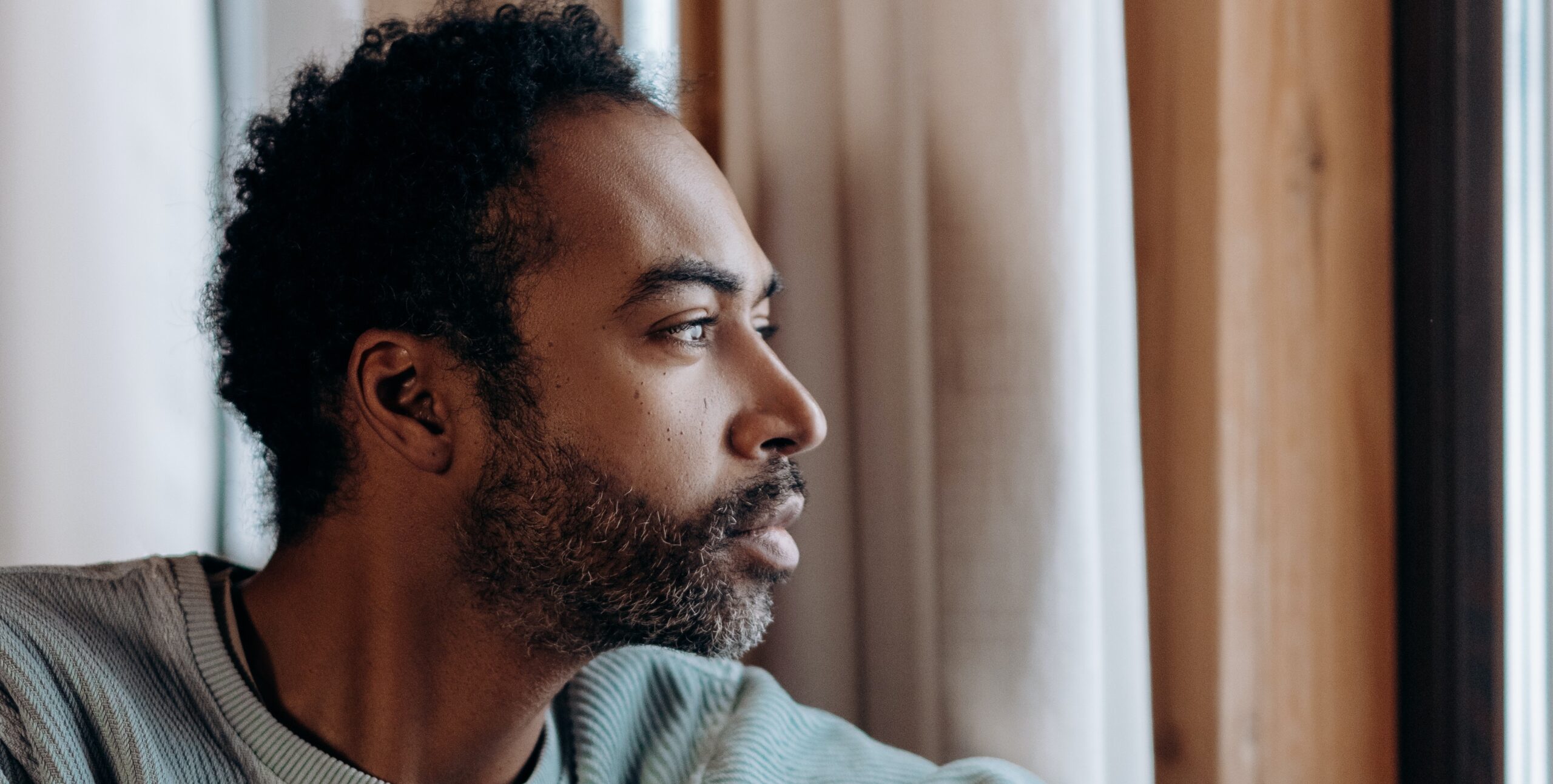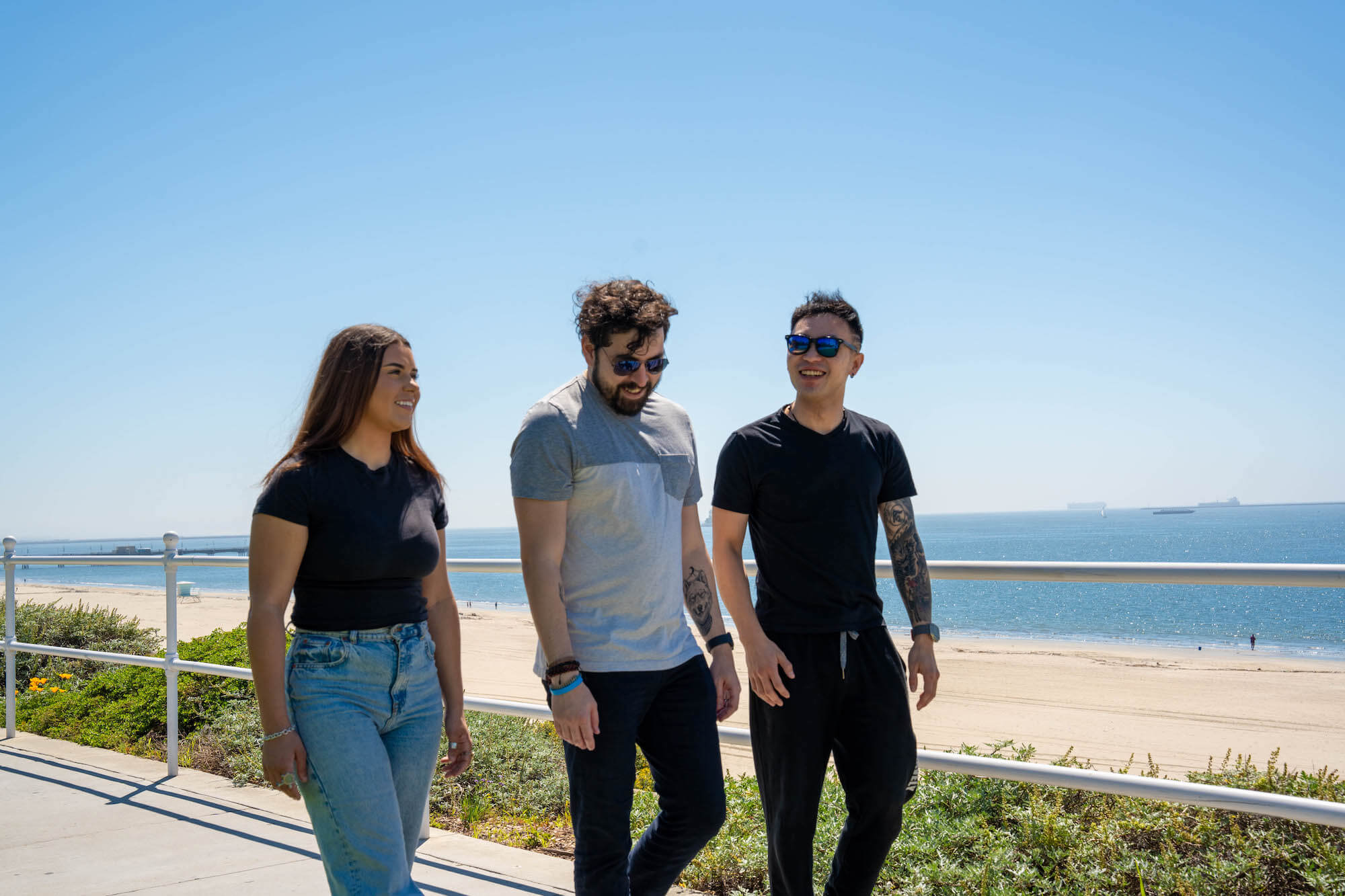
Home » Opioid Addiction
Opioid Addiction: Symptoms and Treatment
- Authored by Joe Gilmore
- Clinically Reviewed by Jenni Busse
- Last Updated 04/19/2024
- By Joe Gilmore
- Reviewed by Jenni Busse
- 04/19/2024

What is opioid addiction?
Opioid addiction is a chronic and complex condition characterized by the compulsive use of opioids, despite adverse consequences.
These powerful, pain-relieving substances can include both prescription medications and illicit substances like:
- Oxycodone
- Hydrocodone
- Fentanyl
- Heroin
- & more
Over time, individuals can develop a physical and psychological dependence on opioids, leading to intense cravings and withdrawal symptoms when attempting to stop using them. Opioids, whether it is Demerol addiction or Oxycontin addiction, can have a devastating effect on one’s physical and mental health, relationships, and overall quality of life. Seeking professional help from Gratitude Lodge can help with overcoming this challenging addiction and achieving long-term recovery.

Symptoms and Effects of Opioid Addiction
The signs and symptoms of opioid addiction differ from person to person, and according to the specific substance. Some indicators might be detectable soon after the initiation of opioid use. Other symptoms may not manifest for many months.
From the onset of opioid abuse, any of the following signs may be visible:
- Depression
- Reduced libido
- Drowsiness
- Anxiety
- Weight loss
- Slurred speech
- Mood swings
- Flu-like symptoms
- Lowered personal hygiene standards
- Insomnia
- Impaired coordination
- Reduction in fitness levels and activity
- Isolating behaviors
- Increased discomfort or sensitivity to pain
OPIOID ADDICTION STATISTICS
75%
of overdose deaths involved an opioid in 2020..
10+ MILLION
people misused prescription opioids in 2019..
30% RISE
in emergency room department visits for opioid overdoses.
What are Opioids?
Opioids are a class of drugs that stimulate the opioid receptors in your brain. Opioids can be natural or synthetic, and they can be categorized as follows:
- Endogenous opioids: Endogenous opioids like endorphins occur naturally in the human body.
- Opium alkaloids: Codeine and morphine are both isolated from the seeds of the opium poppy.
- Semi-synthetic opioids: Heroin, Lortab and oxycodone are both considered semi-synthetic opioids. These are modified variants of opium alkaloids.
- Synthetic opioids: Methadone and fentanyl are examples of fully synthetic opioids. These drugs have similar properties to semi-synthetic opioids, but they are entirely manmade.

WHY DO PEOPLE USE OPIOIDS?
Opioids are prescribed for the treatment of acute post-surgery pain. They have also been routinely prescribed for the management of chronic pain since the 1990s, the root cause of the opioid epidemic, and mercifully in decline.
SLANG Names For Opioids
- VICS
- PERCS
- OCS
- BLACK TAR
- OXY
- SMACK
- JUNK
- HORSE
The Opioid Epidemic
The signs of opioid addiction will vary depending on the type of opioid and other variables. This guide will help you to establish whether you or a loved one might be struggling with opioid use disorder.
Since the late 1990s, the United States has experienced on an ongoing opioid epidemic. By 2017, the government declared the opioid crisis a Public Health Emergency. The most recent data from SAMHSA (Substance Abuse and Mental Health Services Administration) shows that 2.1 million U.S. adults met the criteria for opioid use disorder in 2021. Among these, 1.9 million people were addicted to prescription painkillers.
Physicians are now prescribing fewer opioid-based painkillers, although CDC (Centers for Disease Control and Prevention) reports that the opioid epidemic is now in a third wave due to the ongoing dangers of synthetic opioids like fentanyl and their contribution to overdose.
Familiarizing yourself with the warning signs of opioid addiction is worthwhile if you know someone using this class of medication. While opioids can be highly effective, they are classified as Schedule II narcotics under the CSA (Controlled Substances Act). This scheduling is due to the high potential of opioids for abuse and addiction despite some medical utility.
Opioid Historical Info
Back in the late 1990s, big pharmaceutical companies firmly reassured the medical community that opioid painkillers were not addictive, and they also suggested that opioids should be prescribed more widely than for the relief of chronic pain in cancer patients.
Resultantly, healthcare providers started prescribing opioids for a wider range of pain and at much higher rates.
With a blizzard of prescriptions for opioid medications came widespread misuse and abuse. It soon became clear that these medications were strongly addictive, contrary to the assurances of big pharma.
By 2017, HHS reported that the opioid epidemic was a public health emergency. HHS also announced a five-pronged strategy to combat the opioid crisis.
Before the opioid crisis gained traction and started ravaging the nation, opioids were typically only prescribed for pain relief following surgery, or for patients with late-stage cancer and other terminal illnesses.
Some argue that a letter sent to the editor of New England Journal of Medicine back in 1980 kickstarted the concept that opioids were not addictive. The letter stated that only 4 patients out of almost 12,000 hospitalized and prescribed opioids became addicted. The brief letter contained no evidence fleshing out these claims, yet it may have unwittingly been one of the sparks that led to the opioid crisis engulfing the US in flames.
From here, a small 1986 study involving just 38 people became widely cited by those advocating the use of opioids for treating chronic pain not related to cancer. While it is now believed that this study was overinterpreted, at the time it helped shape the prevailing view that opioids were only addictive when used for recreational purposes.
By the end of the 1990s, pharmaceutical companies were assuring the medical community that opioids were not dangerous or addictive, something that turned out to be demonstrably untrue on both counts.
How Do Opioids Work?
When you take opioids, they travel through the bloodstream and then enter the brain and the rest of the body. On this journey, opioids bind to the opioid receptors in your spinal cord, and digestive tract.
This binding reduces neurotransmitters like glutamate. These are responsible for relaying pain signals, while at the same time triggering the dopamine reward system and dopamine neurons. Resultantly, you feel an intense euphoria that subsides into a state of relaxation lasting several hours.
As well as relieving pain by blocking pain messages, opioids can also act within your brain to alter the way you experience pain.
Why are Opioids So Addictive?
Like other forms of drug addiction, using opioids causes tolerance to form rapidly. This means more opioids are required to deliver the same effects. Using more opioids on an ongoing basis can cause opiate dependence to develop. When you are opioid-dependent, you will experience extremely uncomfortable withdrawal symptoms when the effects of opioids wear off . Tolerance and withdrawal are both diagnostic criteria for opioid use disorder, and these criteria are also indicative of physical dependence.
Over time, using or abusing opioids brings about functional and structural brain changes. By this stage, opioids are required to function normally. The severe physical and psychological withdrawal symptoms that present during detox mean that most people find the ideal pathway to recovery is a supervised opioid detox before an inpatient or outpatient treatment program.
Opioids are more addictive when you use alternative routes of administration to those prescribed – by crushing pills and then snorting or injecting opioids, for example. The risks are compounded when extended-release or long-acting opioids are abused. If individuals rapidly deliver too much of this substance into their system, it can result in overdose deaths.
You will also increase the risk of addiction developing if you take more opioids than directed, or if you take more frequent doses than prescribed.
Using opioids for a week or more will heighten the likelihood of developing a subsequent opioid use disorder.
Many genetic, environmental, and psychological factors play a part in addiction. While addiction to opioids may develop rapidly, it may not manifest for months or years. All opioid addictions are unique.
Don’t Let Opioid Addiction Hold You Back
Break addiction to Heroin, OpioidS, and Other Other Drugs
Opioid Addiction Symptoms
The clinical descriptor for opioid addiction is opioid use disorder, sometimes abbreviated to OUD. OUD is a diagnosis applied to addiction to either opioids (prescription opioid painkillers) or opiates (natural opioids like morphine and codeine).
Opioid use disorder is diagnosed according to the number of symptoms listed in DSM5-TR that present. DSM5-TR is the most current edition of American Psychiatric Association’s Diagnostic and Statistical Manual of Mental Disorders.
If you feel that the daily functioning of a friend or family member is impaired and they are unable to control their use of opioids, they may already have opioid use disorder. The definition of opioid addiction is the compulsive use of opioids regardless of adverse outcomes.
According to the DSM-5-TR (the revised fifth edition of Diagnostic and Statistical Manual of Mental Disorders), opioid use disorder is defined as any problematic pattern of opioid use causing substantial distress or impairment.
Opioid Use Disorder Definition
For a diagnosis of opioid use disorder, at least two of the following symptoms must present during a 12-month period:
- Taking opioids in escalating quantities or for longer than intended.
- Making repeated failed attempts to cut down or control opioid use.
- Spending large amounts of time obtaining and using opioids or recovering from the effects of opioid abuse.
- Experiencing intense cravings for opioids.
- Ongoing opioid use leading to the neglect of personal and professional responsibilities.
- Continuing opioid use despite the persistent occurrence of social and interpersonal problems.
- Devoting less time to social and recreational activities due to opioid abuse.
- Using opioids in dangerous situations.
- Taking opioids despite an awareness that opioid use is causing or inflaming a physical or mental health condition.
- Tolerance forming so you require more opioids or more frequent doses to achieve the same effects.
- Withdrawal symptoms presenting when the effects of opioids wear off.
HOW IS OPIOID ADDICTION TREATED?
When it comes to getting help for opioid addiction, treatment should start with an opioid detox program to ensure that clients can overcome the uncomfortable and dangerous symptoms of opioid withdrawal.
Following detox, addiction treatment can be separated into two different categories:
At an inpatient rehab facility, sometimes known as residential rehab, all therapy takes place at a treatment center over 30 to 90 days. You remain at the rehab from detox to discharge to lower your risk of relapse.
Outpatient treatment for opioid addiction involves attending therapy sessions for a few hours each week at an outpatient rehab center. Overnight, you return home or to a sober living home.
With outpatient rehab, there are more intensive forms of programming available at most rehabs, including IOPs (intensive outpatient programs) and PHPs (partial hospitalization programs). The only difference between these forms of outpatient therapy is the time commitment involved.
Research shows that the majority of mild and moderate addictions can be treated effectively with intensive outpatient treatment. Residential rehab is almost always advisable in the case of severe opioid use disorders. Inpatient treatment is also recommended for those with unstable or unsupportive home environments not conducive to recovery.
MAT For Opioid Addiction
Medication for opioid addiction works in one of two ways:
- Some medications used for the treatment of opioid use disorder bind to the brain’s natural opioid receptors, activating these receptors, although not as intensely as they are activated by opioids.
- Other FDA-approved opioid treatment medications block the opioid receptors in the brain, disrupting the rewarding effects.
MAT is always most effective when combined with counseling and behavioral therapies like CBT or DBT. Integrated treatment generally improves outcomes.
The therapies and services offered are broadly similar in both inpatient and outpatient opioid addiction treatment programs. In addition to medication-assisted treatment – more on this below – you can expect access to the following treatments:
- Individual counseling: Working closely with a therapist, you will probe the specifics of your addiction to opioids.
- Group counseling: Group counseling sessions may not provide the same personalized focus as one-to-one sessions. In return, though, you get the peer support of others in recovery from opioid addiction, and you’ll also be exposed to a wider variety of input during counseling sessions.
- Psychotherapy: Psychotherapy, informally labeled talk therapy, enables you to work with a therapist to identify what triggers you to use opioids. Additionally, you will create and implement healthier coping strategies to enable you to navigate your recovery with less chance of relapsing. CBT (cognitive behavioral therapy) is most commonly applied to substance use disorders like opioid addiction.
- Holistic therapies: Many opioid treatment centers offer access to holistic therapies to supplement the evidence-based treatment provided. From mindfulness meditation and yoga to experiential adventure therapy and music therapy, services will vary from rehab to rehab.
- Family therapy: Most decent opioid addiction treatment centers provide some form of family therapy. A third-party mediator can help you begin unraveling the damage to relationships caused by your opioid addiction.
- Aftercare and relapse prevention: Regardless of the type of treatment program you engage with for opioid use disorder, it is vital to complete your program with appropriate aftercare in place. This sometimes means stepping down to a less intensive form of treatment on ASAM’s continuum of care – from an IOP to an OP, for instance. Alternatively, aftercare may involve attending peer support like NA (Narcotics Anonymous). Addiction is a relapsing condition, so the proper relapse prevention plan will maximize your chances of staying sober throughout your ongoing opioid addiction recovery.
Opioid Addiction Treatment at Gratitude Lodge
Whether you or a loved one have been looking for opiate addiction treatment and detox, we can help you address the physical and psychological components of addiction here at Gratitude Lodge.
Choose from our three affordable rehab centers located in Newport Beach and Long Beach, and benefit from a supervised medical detox followed by inpatient treatment.
Fortunately, opioid addiction medications can help to alleviate withdrawal symptoms and cravings. The FDA approves several medications for the treatment of opioid addiction. The Gratitude Lodge treatment team can administer these medications during detox at our opiate rehab in Newport Beach and throughout ongoing recovery.
To learn more about our addiction treatment program, call our team today.

Opioid Addiction FAQs
Opioids are prescribed for the treatment of acute post-surgery pain. They have also been routinely prescribed for the management of chronic pain since the 1990s, the root cause of the opioid epidemic, and mercifully in decline.
When you take opioids, they travel through the bloodstream and then enter the brain and the rest of the body. On this journey, opioids bind to the opioid receptors in your spinal cord, and digestive tract.
This binding reduces neurotransmitters like glutamate. These are responsible for relaying pain signals, while at the same time triggering the dopamine reward system and dopamine neurons. Resultantly, you feel an intense euphoria that subsides into a state of relaxation lasting several hours.
Using opioids causes tolerance to form rapidly. This means more opioids are required to deliver the same effects. Using more opioids on an ongoing basis can cause opiate dependence to develop. When you are opioid-dependent, you will experience extremely uncomfortable withdrawal symptoms when the effects of opioids wear off. Tolerance and withdrawal are both diagnostic criteria for opioid use disorder, and these criteria are also indicative of physical dependence.
From the onset of opioid abuse, any of the following signs may be visible:
- Depression
- Anxiety
- Mood swings
- Insomnia
- Reduced libido
- Weight loss
- Flu-like symptoms
- Impaired coordination
- Drowsiness
- Slurred speech
- Lowered personal hygiene standards
- Reduction in fitness levels and activity
- Isolating behaviors
- Increased bodily discomfort or sensitivity to pain
DRUG ADDICTIONS WE TREAT
Our Partners

















